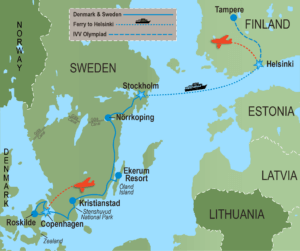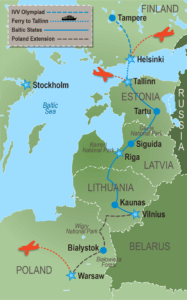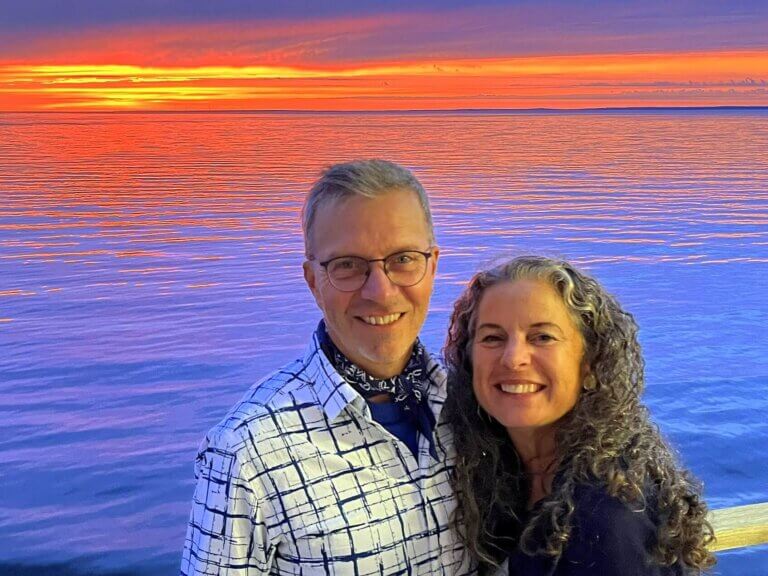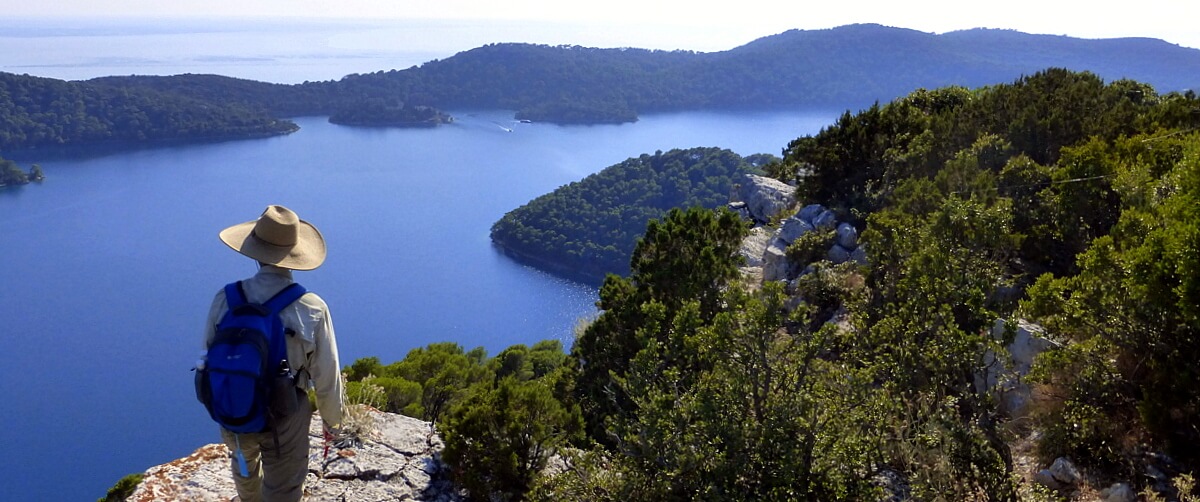Option 1: Denmark, Sweden & Helsinki, Finland
August 5 – 14, 2025 • 10 Days • $3990
Including:
- All land and ferry travel in Denmark, Sweden, and Helsinki, Finland
- Superior tourist-class or better hotel accommodations
- Overnight accommodation in A class or Promenade cabin on Tallink ferry between Stockholm and Helsinki
- 3 nights Roskilde (DK), 1 night Kristianstad (SE), 1 night Öland (SE), 1 night Norrkoping (SE), 1 night Stockholm (SE), 1 night ferry to Helsinki (FI), 1 night Helsinki (FI)
- 12 meals: all breakfasts and 3 dinners (as denoted BD)
- Fees for walking credit for at least 1 walk each in Denmark and Sweden (IVV sanctions will be applied for)
- WAI guide service throughout (2 guides per bus)
- Nature, cultural, and historical expertise of local guides in Copenhagen (DK), Stockholm (SE), and Helsinki (FI)
- Services of national guide for 9 days from Roskilde, Denmark through Helsinki, Finland
- All tipping for national and local guides, coach drivers, and group meals
- Pricing is based on double occupancy. A limited number of single rooms are available at a supplement of $850. We also provide a roommate matching service for those interested.
Activities/Visits to:
- 11 walks as listed: Roskilde Optional (DK), Copenhagen (DK), Deer Park (DK), Ales Stenar & Stenshuvud NP (SE), Öland /Borgholm (SE), Kalmar/Gota Canal (SE), Stockholm Djurgarden (SE), Stockholm Gamla Stan & Islands (SE), Helsinki (FI)
- Kastellet & Nyhavn – Copenhagen (DK)
- Castle grounds of Kronborg & Fredricksborg (DK)
- Ales Stenar (SE)
- Stenshuvud National Park (SE)
- Lerkaka Windmills & Borgholm Castle grounds (SE)
- Kalmar Castle grounds (SE)
- Gota Canal (SE)
- Vasa Museum in Stockholm with guided tour (SE)
- Stockholm’s Old Town – Gamla Stan on guided walk (SE)
- Uppenski Cathedral and Senate Square in Helsinki (FI)
- More fun stops than we can list!
Optional Excursions:
- Denmark Early Arrival Package: airport transfer, Roskilde hotel on August 4, and Roskilde Viking Capital of Denmark Walk including entry into Roskilde Cathedral on August 5 – Day 1
- Free Time Options in Copenhagen – Day 2
- Rosenborg Castle, Christiansborg Palace, Church of Christ the Savior Tower, Tivoli Gardens
- Free Time Options in Stockholm – Days 7 & 8
- ABBA Museum, Royal Palace, Nobel Museum, City Hall, Riddarholmen Church, Storkyrkan Church
- Stockholm Islands Bonus Walk – Day 8
Itinerary
Click on each day to reveal more details.
Option 1: Denmark, Sweden & Helsinki, Finland ONLY
Denmark Early Arrival Package: Travelers arriving early (always recommended) into Copenhagen today will benefit from a 3-part early arrival package including:
- transportation from airport to hotel in Roskilde, Denmark;
- 1 night in the hotel on August 4 with breakfast; and
- participation in the guided optional Day 1 Roskilde Walk, including admission into Roskilde Cathedral, the Westminster Abbey of Denmark.
After collecting your luggage from the luggage carousels, pass through customs and look for a member of the WAI guide team holding a WAI sign. WAI guides will direct travelers to our bus for the 30-minute drive to our hotels in Roskilde, Denmark. Depending upon arrival times, you may need to wait until check-in time. But the wait will be worth the 4-night stay in one hotel! Estimated price: $250 per person; single supplement for hotel – $80
No group activities are planned for today.
Walk #1: Optional Roskilde Viking Capital of Denmark Walk – 7 km, rated 2B
Travelers arrive into Copenhagen today in preparation for our Denmark and Sweden Walking Adventure. Our hotel in Roskilde is about a 30-minute taxi ride from the airport.
Here, you can settle in for the first of three nights in the delightful Danish town of Roskilde. Nestled along its namesake fjord, Roskilde was Denmark’s medieval capital before Copenhagen rose to prominence.
Travelers who arrive a day early on August 4 are invited to join us for an optional walk that takes in a few of the city’s many highlights, including the UNESCO World Heritage Roskilde Cathedral (burial place of most of Denmark’s monarchs), the grounds of an excellent waterfront Viking Ship Museum, and tranquil forest-lined paths along Roskilde Fjord. This guided 7 km walk, with admission to Roskilde Cathedral, is included in the optional Early Arrival Package for travelers arriving on August 4.
Later this evening, travelers rendezvous with their guide team and fellow travelers for a welcome orientation and dinner.
Walk #2: Wonderful Copenhagen Walk – 10 km, rated 1B (IVV sanctioned)
We drive east this morning to explore one of the gems of Scandinavia, the enchanting architecture, charming lanes, and compelling history of Copenhagen. Our guided walk here offers an introduction to countless treasures in the city’s UNESCO World Heritage listed historic center. Attractions along the trail include the star-shaped fortress of Kastellet, magnificent Christiansborg Palace (home to Danish Parliament), the famous Little Mermaid Statue, Amalienborg Palace (the royal family’s residence), the funky vibe of Christianshavn, and iconic Nyhavn, where colorful 17th century houses line the picturesque waterfront.
With several tempting culinary options to choose from for lunch and a wonderful variety of free time offerings in the afternoon (e.g. National Museum of Denmark, Tivoli Gardens, Church of Christ the Savior Tower, or a canal tour), immerse yourself in the vibrant culture and charming atmosphere of Copenhagen before an early evening return to Roskilde.
Walk #3: Deer Park Forest & Seashore Walk – 10 km, rated 1B
From our home base of Roskilde on Denmark’s easternmost island of Zealand, we enjoy a wonderful trio of highlights to the north. We start with a forested walk through the Dyrehaven (Deer Park), created by King Frederik III as his private royal hunting grounds in 1669. This storied estate is famous for its rolling meadows, ancient oak trees, and population of around 2,000 free-roaming deer. Our scenic stroll also passes some of the park’s historic structures, including the Hermitage Hunting Lodge, and finishes in the Bakken, the world’s oldest operating amusement park (dating back to 1583).
This afternoon, we visit the grounds of two famous Danish castles, starting with Kronborg, a UNESCO World Heritage Site in Helsingor and setting for Shakespeare’s “Hamlet”. Our second royal residence is Frederiksborg, a grand 17th century Renaissance palace surrounded by beautiful, French-style gardens.
Following these regal ramblings, a scenic drive takes us through Fredericksund and Skibby on return to Roskilde for one last night in Denmark.
Walk #4: Ales Stenar Iron Age Walk – 2 km, rated 1A
Walk #5: Stenshuvud National Park Nature Walk – 4 km, rated 2C
We bid fond farewells to Denmark this morning and transition to Sweden, our second Scandinavian country. Our route meanders along the southern coast of this once-great maritime power, with a first stop at Ales Stenar, often referred to as “Sweden’s Stonehenge.” This ancient megalithic monument stands atop a coastal bluff and is comprised of 59 large boulders arranged in the outline of a ship. A short stroll here winds amongst these mysterious Iron Age stones, which may have served as a solar calendar or perhaps a burial monument. No one knows!
Continuing through the lovely Skåne region, we stop for an afternoon hike at Stenshuvud National Park, a diverse nature reserve that blends forested hills, open meadows, heathlands, and sandy Baltic beaches.
Our first day in Sweden finishes in Kristianstad, founded in 1614 by its namesake king and known for its well-preserved Renaissance architecture.
Walk #6: Borgholm Castle Walk – 5 km, rated 2B
After a morning drive north from Kristianstad, today’s focus rests solidly on Öland, Sweden’s second largest island, sitting in the Baltic Sea off the southeastern coast. This idyllic place is known for its unique landscape, featuring vast open plains, a large limestone plateau (UNESCO-listed Stora Alvaret) that is home to a number of rare plant species, iconic windmills, and ancient castle ruins.
Today’s walk explores the wonderful little town of Borgholm, established in the early 19th century in the shadow of Borgholm Castle and Solliden Palace, a royal summer residence. Featuring charming coastal town scenes, quiet forests, and the iconic castle ruins of Borgholm (dating back to the 12th century), this walk is a great precursor for a full group dinner and relaxing evening at nearby Ekerum Resort.
Walk #7: Kalmar Castle Walk – 2 km, rated 1A
Walk #8: Göta Canal Walk – 6.5 km, rated 1A
While Öland beckons us to stay and explore further, we leave the island this morning and enjoy a brief wander through the historical center of Kalmar, once a significant trading hub in the Middle Ages. Our trail takes us past highlights such as Kalmar Cathedral and the Old Water Tower, and culminates at Kalmar Castle, one of Sweden’s most impressive Renaissance castles.
Continuing north from Kalmar, our journey takes us to Söderköping, a charming old port and trade center. Following a break for lunch, we embark on an easy, pastoral stroll from Söderköping to Mem along the Göta Canal, often referred to as Sweden’s “blue ribbon.” This remarkable engineering achievement stretches 243 miles across Sweden to connect the Baltic Sea with the North Sea. Completed in the early 19th century and incorporating numerous locks, lakes, and rivers, this pioneering route was initially built to facilitate trade and transportation but is now a popular tourist destination, offering boat trips, cycling and walking paths, and charming villages (like Söderköping) along its route.
We finish our day along the Motala River in the historic city of Norrköping, a major center for textile manufacturing.
Walk #9: Stockholm Djurgarden Island Walk – 5 km, rated 2B (IVV sanctioned)
A morning drive brings us to the great Nordic capital city of Stockholm. Founded in the 13th century, the city is strategically located on a series of islands, providing an ideal site for trade and defense against invasion.
Our first foray into the diverse delights of Stockholm takes us to Djurgården, one of those many islands, for an intriguing visit to the Vasa Museum. In the 17th century, at the height of its military power, Sweden’s king commissioned a massive and ornately decorated warship known as the Vasa, which promptly sank on its maiden voyage in 1628. Raised from the chilly depths, and painstakingly restored, the Vasa and its surrounding museum are a memorable sight to behold.
This afternoon’s walk takes us past several other noteworthy highlights on Djurgården, including the ABBA Museum, Gröna Lund Amusement Park, and Rosendal Palace. The route finishes with a stroll through Nobelpark past several embassies on our return to the Vasa Museum.
A centrally located Stockholm hotel offers many good walkable dining options this evening.
Walk #10: Stockholm Gamla Stan (Old Town) Walk – 4.5 km, rated 1A
BONUS WALK: Stockholm Islands Walk – 2.5 km / 3.5 km, rated 1A
Gamla Stan (Old Town) is the historic heart of Stockholm, famous for its charming cobblestone streets, colorful medieval buildings, and rich cultural heritage. Our guided walk this morning takes us past many of these well-preserved treasures, including the Royal Palace, Riddarholmen Church, Storkyrkan Church, and the Nobel Museum. The city’s long history is marked by a mix of architectural styles, from Gothic to Baroque, with street performers, local artisans, and outdoor markets adding to the colorful milieu. Countless hidden squares and narrow alleyways teeming with cafes and tourist shops lend a lighter ambiance to the trail.
Following the guided walk, lunch and the remainder of the afternoon are free to explore this amazing Scandinavian city. Consider a visit to the palace, City Hall, or Nobel Museum, or climb the church tower at Storkyrkan for fabulous views over the city.
Or consider joining your WAI guides on a bonus afternoon walk that incorporates a brief ferry ride (nominal cost not included) and a lovely stroll on the neighboring islands of Skeppslholmen and Kastellholmen.
Mid-afternoon, we board our bus and take a short drive to the ferry dock, embarking on a large ship bound for Helsinki, Finland. We look forward to a memorable overnight journey through the Stockholm Archipelago that includes a group dinner, postcard-perfect island scenery, and comfortable cabins.
Walk #11: Helsinki Finland Walk 3/6 km, rated 1A
After an overnight crossing of the Baltic Sea and breakfast aboard our ship, we disembark mid-morning in Helsinki, capital of Finland. The city has roots dating back to the 16th century, when King Gustav I of Sweden founded it as a trading post to compete with nearby Reval (now Tallinn, Estonia).
Winding our way through this city’s mix of modern and historical architecture, today’s walk incorporates several highlights including Uppenski Cathedral, Senate Square, Helsinki Cathedral, Kemmpi Chapel and the Esplanade.
After enjoying a break for lunch, those finishing their Adventure in Helsinki will be transported to a Helsinki airport hotel. After Helsinki farewells, Olympiad participants are whisked away northward for the IVV Olympiad in Tampere.
A week and a half of Scandinavian delights draws to a close today as you pack your bags for a return flight to North America. Thank you for joining us in Denmark, Sweden, & Helsinki, Finland. Safe travels home!











